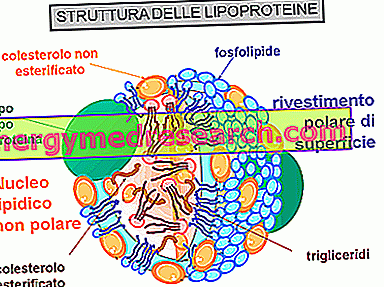The antioxidant properties of vitamin C, also known as L-ascorbic acid (E300), are widely exploited by the food industry; in this regard it can be added to the various products as such or in the form of salts or esters.
Purpose of Employment
PREVENTS THE IMPRESSION

By blocking the oxidation process due to contact with oxygen in the air, L-ascorbic acid prevents browning of many foods .
anti-introvert agent
Vitamin C is an anti-intruding ingredient, and as such prevents the conversion of nitrates (E251, E252) in dangerous nitrites (E249, E250). These substances are added to cured meats and some types of cheese as antimicrobial agents (especially anti-botulinum), able to improve the appearance of the meat and preserve its flavor. Once ingested, at the gastric level the nitrites are converted into nitrosamines, carcinogenic substances which we would gladly do without; nitrates, for their part, while being less dangerous, act as a "reservoir", thanks to the ability to convert to nitrites as they are consumed.
acidity regulator'
The flavor of ascorbic acid vaguely resembles that of citrus fruits, with a marked degree of acidity for the pure form; this additive can therefore affect the aroma of the product to a greater or lesser degree.
Applications
L-ascorbic acid (E300) and its salts (E301, E302), due to their characteristic hydrophilicity, are added to flour (they prevent browning), to fresh pasta, to beer, to wine, to pre-packaged minced meats and cured meats, to jams and jellies, to dehydrated milk, to frozen, frozen or otherwise packed frozen fruit, juices and vegetables.
Just sprinkle a freshly cut apple into wedges, or a portion of grated carrots, with a few drops of lemon juice (rich in vitamin C and citric acid) to notice its natural ability to prevent browning of foods.
The esters of ascorbic acid (E304), by virtue of the lipophilicity that characterizes them, are instead added to fats (eg vegetable margarines) and oils, with the exception of virgin ones and olive oil. The aim, in this case, is to prevent the rancidity to which oils are subjected, in particular those rich in polyunsaturated fatty acids. Ascorbic acid esters are also used as food coloring E160 - E161, to prevent oxidation of these colors.
Side Effects and Vitaminic Activity
| E300 | L-ascorbic acid |
| E301 | Sodium ascorbate |
| E302 | Calcium ascorbate |
| E304 (I) | Ascorbyl palmitate |
| E304 (II) | Ascorbyl stearate |
At concentrations used in the food industry, ascorbic acid and its derivatives do not produce any adverse effects.
According to various tables of additives circulated on the Internet, ascorbic acid used as such has no vitamin action.
It is actually an error, since this substance is obtained by synthesis and as such is structurally and functionally identical to that contained in the integrators. If anything, we can underline how - despite this equality - since vitamin C is known for its "fragility", it can suffer considerable losses during food storage.
It is also correct to state that vitamin C sold as an additive cannot be used or marketed as a supplement; this is because the Ministry responsible for the matter imposes a maximum dosage of intake equal to 180 mg / day, while the vitamin C marketed as an additive is raised by this obligation; as such it can easily be sold in large formats. If you want, it's a bit like agricultural gasoline and trucking gasoline; they are identical, but the cost and regulations are different.
Finally, the D enantiomer of vitamin C (D-ascorbic acid) has no physiological significance (enantiomers are compounds, one the non-overlapping mirror image of the other, which differ only in the optical rotation power; generally only one of the two enantiomers are able to react with biological receptors and carry out the desired function, in the case of vitamin C only the L enantiomer - L-ascorbic acid - is active).



